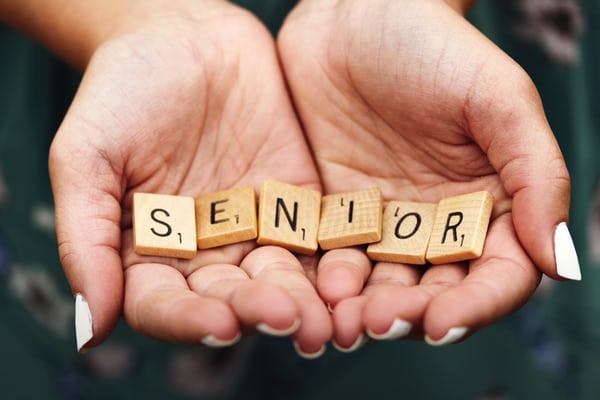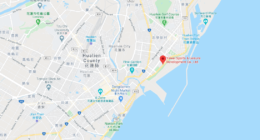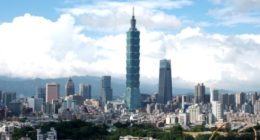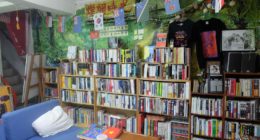This is the second in a series of pieces on a new education methodology being introduced in Taiwan as seen by those it affects most – the students.
Part 1 appeared earlier in the month, and is here.
After understanding the initiatives and some basic information of the (new) curriculum, let’s take a look into one of the adjustments that causes the most concern – the learning portfolio, also called the e-portfolio.
Under the 108 curriculum, admission to universities requires taking the General Scholastic Ability Test (which accounts for less than 50% of the admission) and overall learning portfolio records (accounting for at least 50% of the admission).
The overall learning portfolio records includes interviews, different requirements for different department and the learning portfolio that will be discussed later.
Some expected advantages after implementing the portfolio system include:
1. Integrating initiatives and specialties of the 108 curriculum into classes and other learning.

2. Letting students express and design their learning outside of regulated tests.
3. Encouraging students to show their personalities and real learning traces by uploading records related to their interests, things they are good at, course enrollments, and related activities, to show their initiative, passion, and work.
4. Alleviating the burden of pressure for students to defer the admission package until their final year.
5. Assisting students to develop future careers and understanding more about who they truly are; to list practical evidence to tell universities who they are, and why their work demonstrates that they are suitable for the department they are applying to.
In previous years, students needed to prepare their own application packet in their final year in high school, hand in the transcripts, schoolwork, portfolio, or other materials at their interview.
Nevertheless, under the new 108 curriculum, the learning portfolio is like an advanced version of the former application packet.
Students need to prepare their portfolio from their junior year, doing so each semester when they have to hand in their academic work all the way through to graduating from high school.
The portfolio thus adds up year on year.
By recording students’ academic records for three years, their learning traces can easily be tracked, professors in university can better understand a students’ learning interest, and their abilities.
In some reports and claims by officials, this is something that better helps students who come from rural areas.
So, what exactly are things that will be recorded in the portfolio?
- Basic information and records of course enrollments
This information would be sent to the portfolio platform by school officials. Information includes being in cadres of certain classes or school clubs.
- Records about course enrollment and work
In this part, course consultation, schoolwork, and transcripts would be recorded.
Course enrollment records (over the academic year, subjects, and transcripts) would be documented directly by school officials, with students able to edit in their files and thoughts to the platform.
Each semester, students can choose a maximum of 6 pieces of work they’ve finished in class to add to the learning portfolio information center, file uploads can be homework, work that has been done practically and reports, but work uploaded has to be verified by the teachers who taught that subject.

There are some problems of course, since some teachers might want to boost students’ portfolios, so they are could be more willing to design special activities and homework for classes.
Many think that the better their students behave, the more chances their students will get. .
- Other activities/ extra-curriculum learning
Content in this area is more flexible and diverse.
Students can submit items – with evidence – such as awards received, or prizes; participation records from club activities; certificates about English, math, science, or other abilities; volunteering in or outside of school; advanced learning in universities, and so on.
Students can submit up to 10 pieces of work for each academic year.
There’s no need for teachers to verify them.
Students can upload anything that fits their interests as they see fit.
There are wide concerns about the difference between urban and rural areas and even for schools in the same area that ‘rank’ differently, however, including the resources each student has access to which can vary tremendously.
Professors say they will primarily take work done in alternative learning periods, and group activity periods into account.
Passion, learning attitudes, and learning background would also be highly evaluated for every student.
To avoid an “arms race” and to encourage people to focus on quality instead of quantity, there are limits for how many pieces of work will be taken into consideration by universities.
Schoolwork that can be chosen to hand into the admission center for universities must number less than 3; however, for extracurricular activities, the maximum is 10.

In fact, if students are not satisfied with their portfolio, they can still opt to hand in PDFs or other documents to universities.
By looking into the initiatives and expectations for implementing the learning portfolio, the content of it, and some related issues, we can have a wider knowledge of the learning portfolio and how it is intended to work.
For the next article, I’ll point out some conflicts between the promising initiatives and what we truly face in the educational field in modern day Taiwan.










Comments are closed.